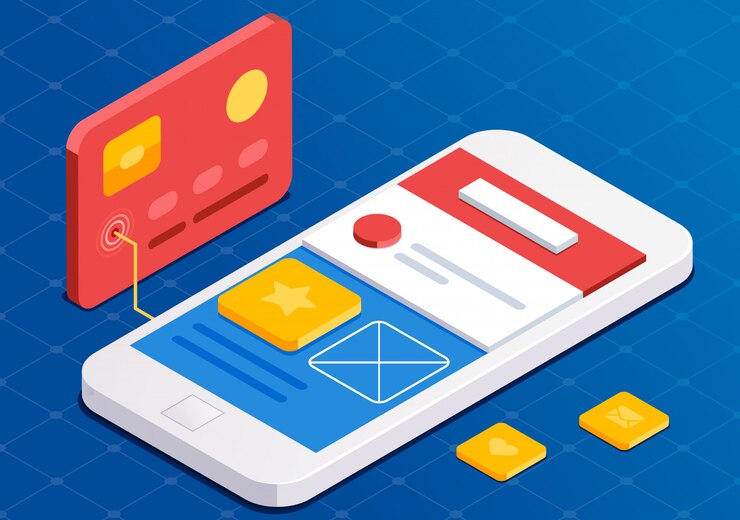Let's Get You Started

Let's Get You Started




Front end mobile app development is an essential and growing field that directly influences how users interact with their mobile devices. As businesses become more digital, the need for skilled front end developers increases rapidly. Whether you’re an experienced developer or a newcomer, understanding the complexities of front end mobile app development can give you a competitive edge. With this Appxide guide, we’ll explore everything you need to know about front end mobile app development, from the basics to advanced techniques.
Front end mobile app development focuses on the parts of a mobile application that users see and interact with. This includes everything from the layout and design to the animations and user interactions. It’s all about creating an intuitive and engaging user experience that keeps users coming back.
Choosing the right framework can significantly impact your mobile app development project. These are a few of the well-liked frameworks:
Developed by Facebook, React Native lets developers build mobile apps using JavaScript and React. It’s known for creating high-quality apps for both iOS and Android using a single codebase.
Google developed Flutter, which uses the Dart programming language and offers a rich set of pre-designed widgets. Its impressive performance and stunning user interfaces are widely recognized.
Swift is Apple’s programming language for iOS development. While it’s not cross-platform, it’s highly optimized for Apple devices and provides a seamless experience.
Creating a successful mobile app requires more than technical skills. Below are several recommended guidelines to adhere to:
Performance can be a significant challenge, especially on older devices. Optimizing your code and assets is essential.
Ensuring your app works seamlessly on both iOS and Android requires effort. Frameworks like React Native and Flutter can help, but thorough testing is crucial. When considering android app development vs web development, it’s important to understand the unique challenges of each. Android app development deals with various devices and screen sizes, while web development focuses on compatibility across different browsers.
Both iOS and Android frequently release updates. Staying current with these updates is essential to ensure your app continues to work correctly.
Mobile apps are often targeted by hackers. Implementing robust security measures is critical to protect user data.
PWAs are web apps that provide a similar experience to mobile applications. They can work offline and provide a fast, reliable user experience.
AI and ML are increasingly being integrated into mobile apps to provide personalized experiences and advanced features like voice recognition and image processing.
AR and VR are becoming more popular in mobile apps, providing immersive experiences for gaming, shopping, and more.
With the rollout of 5G, mobile apps will be able to offer faster speeds and lower latency, enabling more advanced features and better performance.
IoT devices are becoming more common, and mobile apps are being developed to control and interact with these devices.
| Framework | Language | Platforms | Key Features |
| React Native | JavaScript | iOS, Android | Cross-platform, large community, near-native performance |
| Flutter | Dart | iOS, Android | Hot reload, customizable widgets, high performance |
| Swift | Swift | iOS | Optimized for iOS, clean syntax, seamless integration |
| Ionic | HTML, CSS, JS | iOS, Android | Uses web technologies, cross-platform |
| Xamarin | C# | iOS, Android | Microsoft’s framework, cross-platform |
Front end mobile app development is an exciting field with endless possibilities. By staying up-to-date with the latest trends and best practices, you can create high-quality mobile apps that provide a fantastic user experience. Whether you’re just starting out or looking to enhance your skills, this guide provides a solid foundation to help you succeed in front end mobile app development.
A 1: Front end mobile app development focuses on the visual and interactive aspects of a mobile application. It includes UI design, UX design, and front-end programming to create an engaging user experience.
A 2: Some of the best frameworks include React Native, Flutter, and Swift. Each has its own strengths and is suitable for different types of projects.
A 3: To optimize performance, minimize load times by optimizing images and assets, ensure smooth animations, and write efficient code. Testing on multiple devices can also help identify performance issues.
A 4: Common challenges include performance issues, cross-platform compatibility, keeping up with updates, and maintaining security.
A 5: Future trends include Progressive Web Apps (PWAs), integration of AI and ML, augmented reality (AR) and virtual reality (VR), 5G technology, and the Internet of Things (IoT).

Welcome to Appxide, where innovation meets utility in the world of app development. Our mission is to craft cutting-edge digital solutions that simplify lives and spark connections. With a diverse portfolio that traverses multiple sectors, we are committed to excellence and user-centric design. Stay tuned to our blog for the latest in tech, insights, and the stories behind our projects. Dive into the future with us – where every app we create is a step towards the extraordinary.